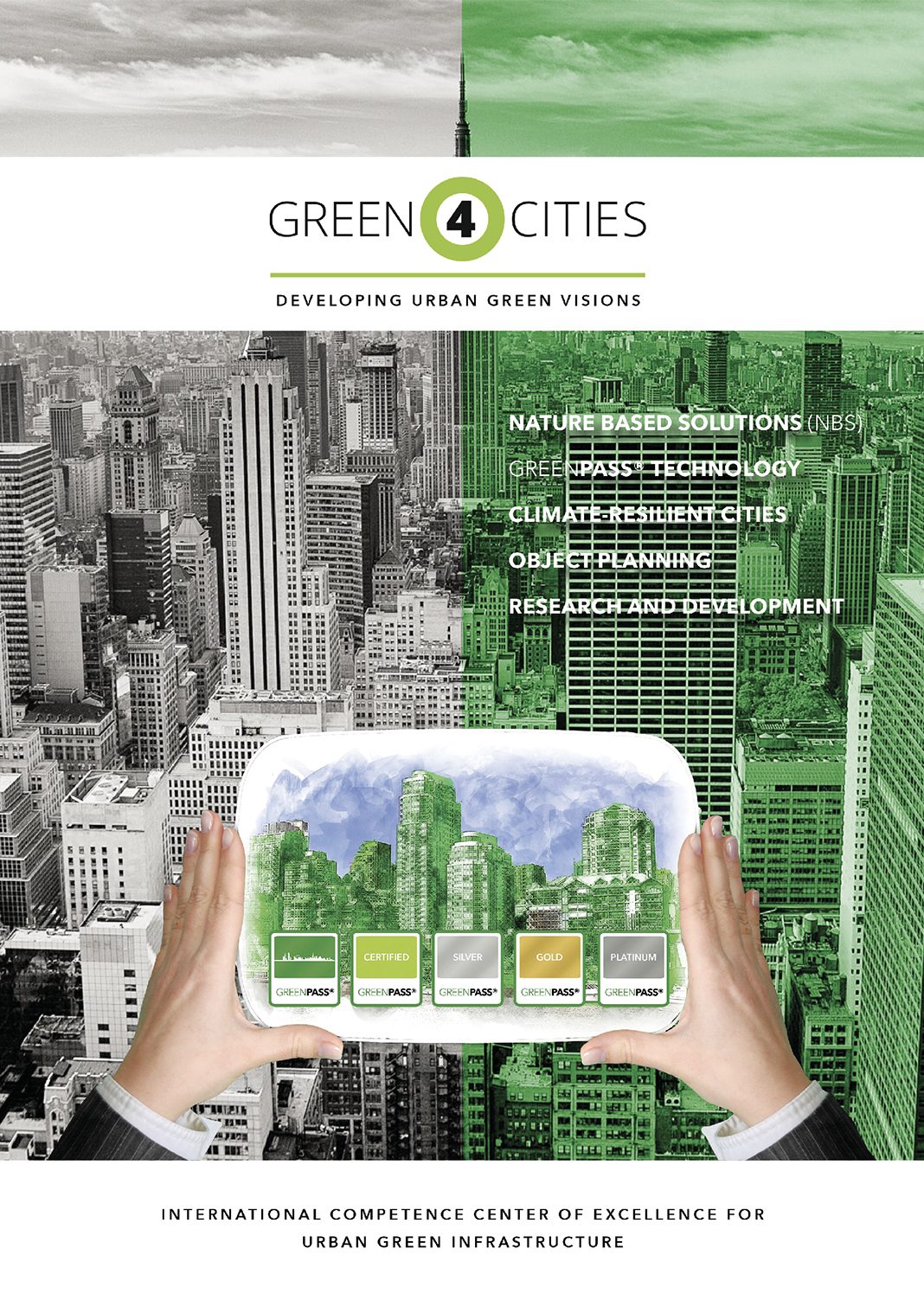The role of a green infrastructure competence centre is to develop and realise concepts, ideas and solutions for green visions in the area of technical research and development.
Green4Cities creates concepts which can help to guide the sustainable advancement of smarter cities, with a focus on improved quality of life and resilience to climate change. The centre was founded as a spinoff from the University of Natural Resources and Life Sciences in Vienna, and takes advantage of vast experience in urban green infrastructure research and development, to offer consultation in the area of planning and vegetation technology, and to provide detailed certification services on the effects of green infrastructure in cities.
GREENPASS
Outlined in this booklet are a number of examples of the types of solutions and expertise on offer by Green4Cities. The organisation makes the case that nature-based solutions and the inclusion of green spaces and green infrastructure within the urban environment are vital to the development of smart cities, and could help to reduce carbon dioxide emissions and improve quality of life.
Among the centre’s achievements include the GREENPASS method, which expands current world-leading micro-climatic simulation software to advise every stage of urban planning and architecture, combined with resource indicators, which help to optimise effects and costs, making city development and green infrastructure more efficient.
What does Green4Cities provide?
As a green infrastructure competence centre, Green4Cities relies on nature-based solutions, which refers specifically to the building of integrated greenery in all application areas of urban infrastructure, including the tops of high-rise buildings and vertical indoor farming.
The organisation’s expertise expands to cover the maintenance of green infrastructure and spaces within urban environments, including rainwater harvesting technologies like water-retaining green roofs, and substrate development in line with urban mining processes.
This booklet concludes with a detailed discussion of how the integration of nature into urban spaces could impact efforts to combat climate change, be beneficial to health, and will be increasingly necessary to the development of smart cities.


